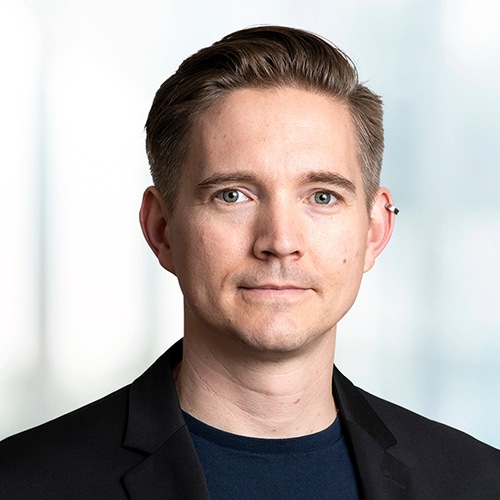
Connects decision-makers and solutions creators to what's next in quantum computing
Q&A with D-Wave Vice President of Quantum Business Innovation Murray Thom

D-Wave is a Canadian quantum computing company that builds and delivers quantum systems, cloud services, application development tools and professional services to support its customers’ quantum journey.
It was the world's first company to sell computers to exploit quantum effects in their operation. Some of D-Wave's partners, which spoke at the company’s recent Qubits conference, include Mastercard, Deloitte, Davidson Technologies, Recruit Co., SavantX and Save On Foods.
D-Wave vice president of Quantum Business Innovation Murray Thom talked to Enter Quantum about how gate-based and annealing quantum computers deliver different benefits and how the company’s new predictive model features can optimize AI and machine learning.
Enter Quantum: What differentiates D-Wave from other quantum providers?
We pride ourselves on being a practical quantum computing company. Our focus is on helping customers find and build business value using quantum computing technology.
Quantum computers are devices that are meant to allow us to use quantum mechanical effects to solve complex problems faster or better. Our job is to strip away the complexity and allow people to see that resource for its simplicity.
We have the world's largest programmable quantum systems available for our customers to program and access. They're made available through our Leap quantum cloud platform, which is designed to bring all of the information and access resources that they need to build these high-value features that can bring this business value to those applications.
D-Wave builds commercial annealing quantum systems as well as developing gate-based ones. Why is it important to have like a foot in both technologies?
In quantum computing, you're leveraging quantum mechanical effects to help us solve challenging problems. Once you've decided to do that, there are several different models for how to use those quantum effects. Two of the most common ones are annealing and gate.
A way to think about it they provide different resources when we're trying to accelerate information processing. In one case (gate-based), we're allowing the computer to store more information and process it. That's very powerful but it's also quite fragile. That’s going to enable us to empower applications like quantum chemistry and differential equations. The trick is that we're actually putting information into the quantum states themselves. The fragility is that if the quantum state collapses, the information gets lost and that's why we have error correction techniques that are important for that model.
The other model (annealing) is about using quantum effects to move between solutions quickly. That's useful for looking at applications that have large numbers of solutions. And by large, I mean vastly more solutions than the estimated number of particles in the universe number of solutions There are common problems like that, that occur even at a small scale in regular business operations.
If you have a whole set of grocery deliveries that you need to make in a city, and you have a fleet of drivers who are going to be making those deliveries, the number of combinations of schedules and deliveries that people can make is enormous. But each of the solutions is a workable plan. So as the quantum processor is moving between the solutions, if the quantum state collapses, it lands on one of those plans, which means that you can take that plan and operate with it. But if you hold it there, the quantum state will reemerge, and then you will continue moving to progressively better solutions.
That's why the two kinds of models are maturing at very different rates. That's allowed us to use the quantum annealing systems to impact production applications. They also focus on different application areas. Because we want to provide our customers with full quantum solutions for various use cases, we’ve expanded our product set to include both.
D-Wave recently announce optimization features for AI and ML. What do they do?
When you’re building predictive models that can ingest data and basically sort of give you a prediction of the outcome, like I think there's a car in this image or not, you're often trying to key off of smaller features and segments of the image that are indications of what it is such as color tones.
Each of those little features is relatively weak, so it's a common technique to build huge libraries of features and try to use those to help you with that sort of prediction task. However, you have to cut the feature set down to make the model computationally efficient.
There's a way that you can use information about the relationship between those features. For instance, if all you had to do was just pick the best features, that would be an easy calculation to do, you just rank them and grab the first 10. But it turns out that some features can catch errors that other features are missing. There's a correlation or mutual information between those features.
If you want to sub-select the features taking that information into account, that makes for a very difficult optimization problem. We’re able to use our quantum hybrid technology to help accelerate that important task of feature selection which can yield high-quality results in terms of better accuracy of the predictive model with really small feature sets.
This can also be helpful in terms of reducing overfitting (when an AI model becomes so highly tuned to the data on which it was trained that it cannot be used for other applications). It’s part of that broader machine learning workflow, but it's an important part in terms of realizing benefits and making these classifiers or recommender systems efficient enough to run over large compute systems on mobile platforms.
About the Author(s)
You May Also Like
.png?width=100&auto=webp&quality=80&disable=upscale)
.png?width=400&auto=webp&quality=80&disable=upscale)




